70s Candy – History and Fun Facts
Have you ever wondered what candy was popular the year you were born? Or what cereal did people eat the morning when The Beatles announced their breakup? If you were a 70s kid, what 70s candy did you wish to have in your lunch bag? Or which snack did you enjoy at the movie theaters? Candy from the 1970s continued the colorful vibes of the previous decade. There was a lot to offer from the candy manufacturers, you just needed to choose and wish for it.
The hippy subculture and their support for “Free Love” became even more intense in the 1970s. Even though the Cold War was getting even colder, and revolutionary movements were taking place, people were enjoying the various pleasures that life had to offer. Many Hollywood stars were born in that era. Led Zeppelin’s “Stairway to Heaven” hit the charts and was catching everyone’s attention. Let’s find out which candy from the 1970s people tasted in the process of listening to Pink Floyd and feeling “Comfortably Numb?”
Please leave a review or any memories of this snack in the comments at the bottom of this page. Thank you!
Popular Candy Names from the 1970s
- Hubba Bubba
- Ring Pops
- Twix
- Sherbet Dip Dab
- Marathon Bar
- Laffy Taffy
- Sir Grapefellow
- Fruity Yummy Mummy
- Whistle Pops
- ZotZ Candy
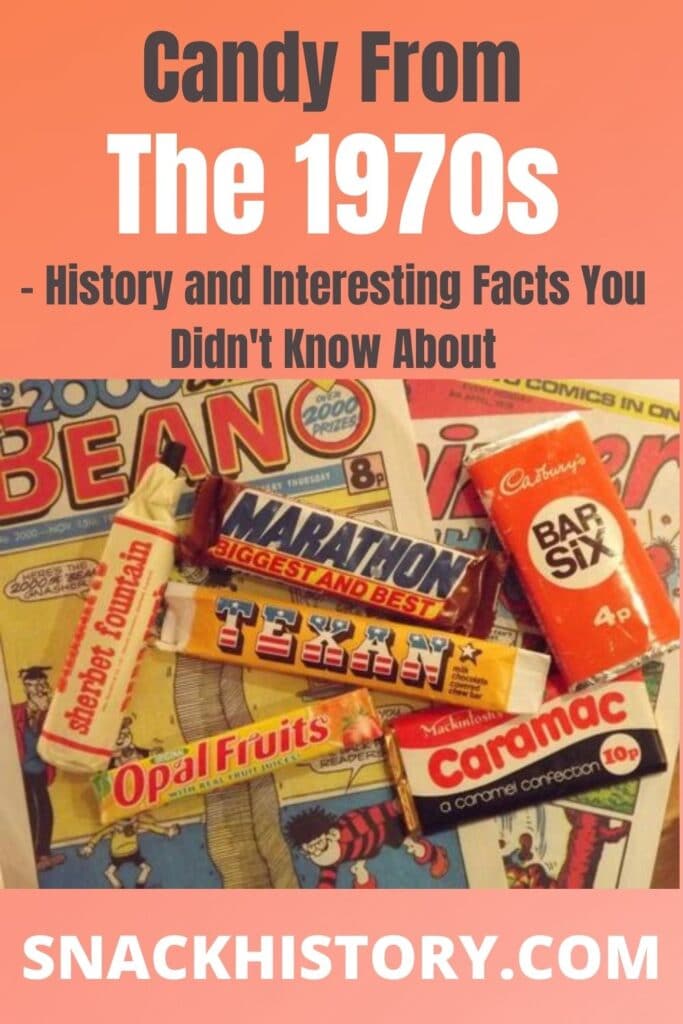
Pop culture and 70s candy
As globalization spread across the world, it became possible to get closer to other cultures. Music was dominating the radio stations, Hollywood movies were shown around the world, and different treats were brought into the United States from other countries. People could taste the flavors from exotic and interesting countries.
We can assume that retro candy from the 1970s had such a big impact on pop culture that it was mentioned various times, even years after it was the most popular. There were snacks themed on famous movie characters or book villains, like General Mills Monster Cereals. Various movies were taken about Willy Wonka. Popular candy was used in the lyrics of songs like D4L’s “Laffy Taffy.”
Holidays became unimaginable without candy. There were limited editions of your favorite treats as Christmas candy, Halloween, or Valentine’s Day candy, like heart-shaped York Peppermint Patties, kids’ favorite Double Dip Candy or Halloween candy themed M&Ms.
It became common to give candy as a present, especially chocolate. Children loved to share their favorite treats in the classroom. Fruit String Thing, Thingamajig Candy, or Whatchamacallit Candy Bar were all around. Maybe it even helped them to make some new friends and acquaintances.
Popular Candy from the 1970s
What is your most pleasant memory connected to candy from the 1970s? Did you break the piñata full of Jolly Ranchers and Tootsie Rolls on your birthday? Did you share 3 Musketeers candy bars with your friends and imagine you had adventures ahead? Or did you have a competition to see who would blow the biggest bubbles with Hubba Bubba bubble gum? Thinking about 70s candy revives nostalgic childhood memories. Let’s go back to your childhood once again and take a look at our list of the popular candy from the 1970s.
1. Hubba Bubba
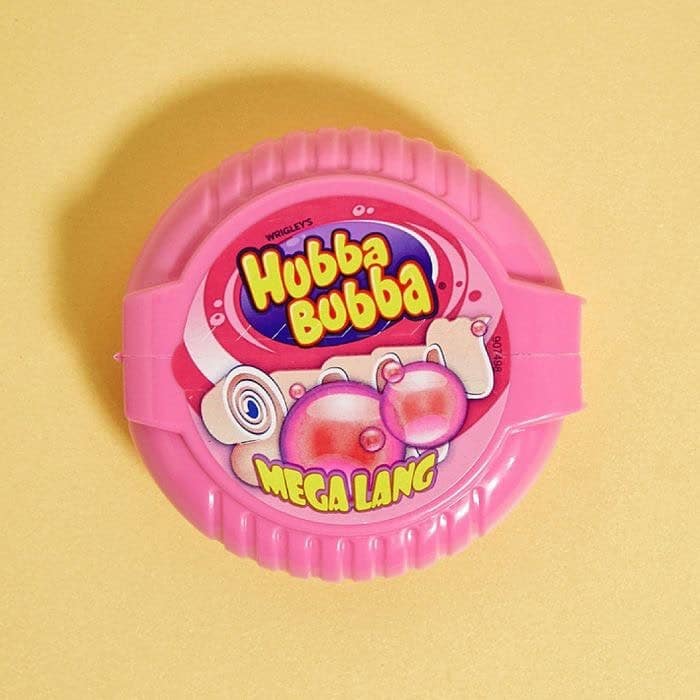
Hubba Bubba is a bubble gum created by The Wrigley Company, which is a subsidiary of Mars, Incorporated. It was introduced in 1979. Do you remember the first ever Dubble Bubble Gum? Hubba Bubba, like other bubble gums, is created with inspiration from it.
There is no doubt that bubble gums are for blowing huge bubbles. But the trouble is real if it sticks to your face. The Hubba Bubba commercial stated that it was less sticky than the others. So the slogan “Big bubbles, no trouble” was to attract people who admire huge bubble gum bubbles.
Initially, there was an original flavor for Hubba Bubba, which was called “outrageous original.” Since then, various flavors have been introduced, like Strawberry Watermelon, Cool Cola, Sweet and Sassy Cherry, and Mystery Flavor.
2. Ring Pops
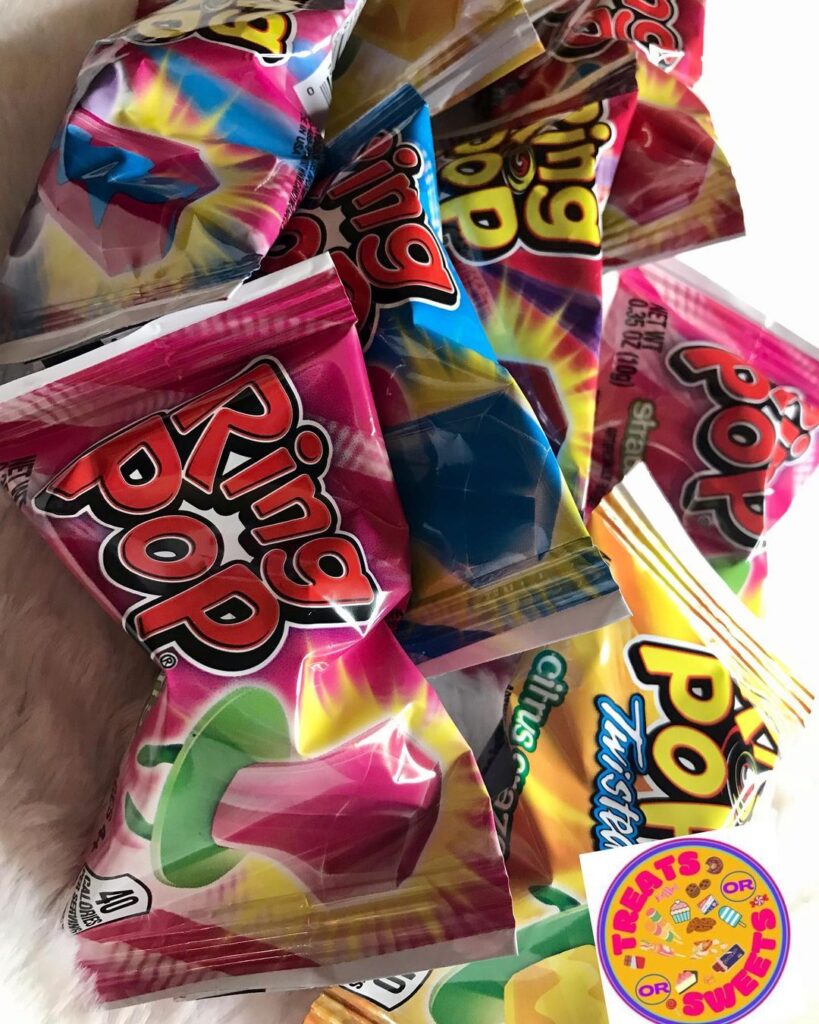
Ring Pops are fruit-flavored lollipops that were manufactured by Topps, the company which is also famous for creating Push Pops, Baby Bottle Pops, and many more. They were first introduced in the 1970s, and had a wearable ring shape with the large hard candy “jewel”. Children admired this iconic candy from the 1970s as they loved to wear Ring Pops on their fingers.
Have you ever heard an interesting story about how Ring Pops were created? It was Frank Richard’s idea, who was a product engineer at Topps Company. He wanted to help his daughter break her thumb-sucking habit, so he invented Ring Pops. Candy also resembles a pacifier a lot, so children would suck on this great 70s candy instead of their thumbs.
Ring Pop was not the first candy jewel to be created. Before that, there were Candy Necklaces and Candy Bracelets from the 1950s.
3. Twix
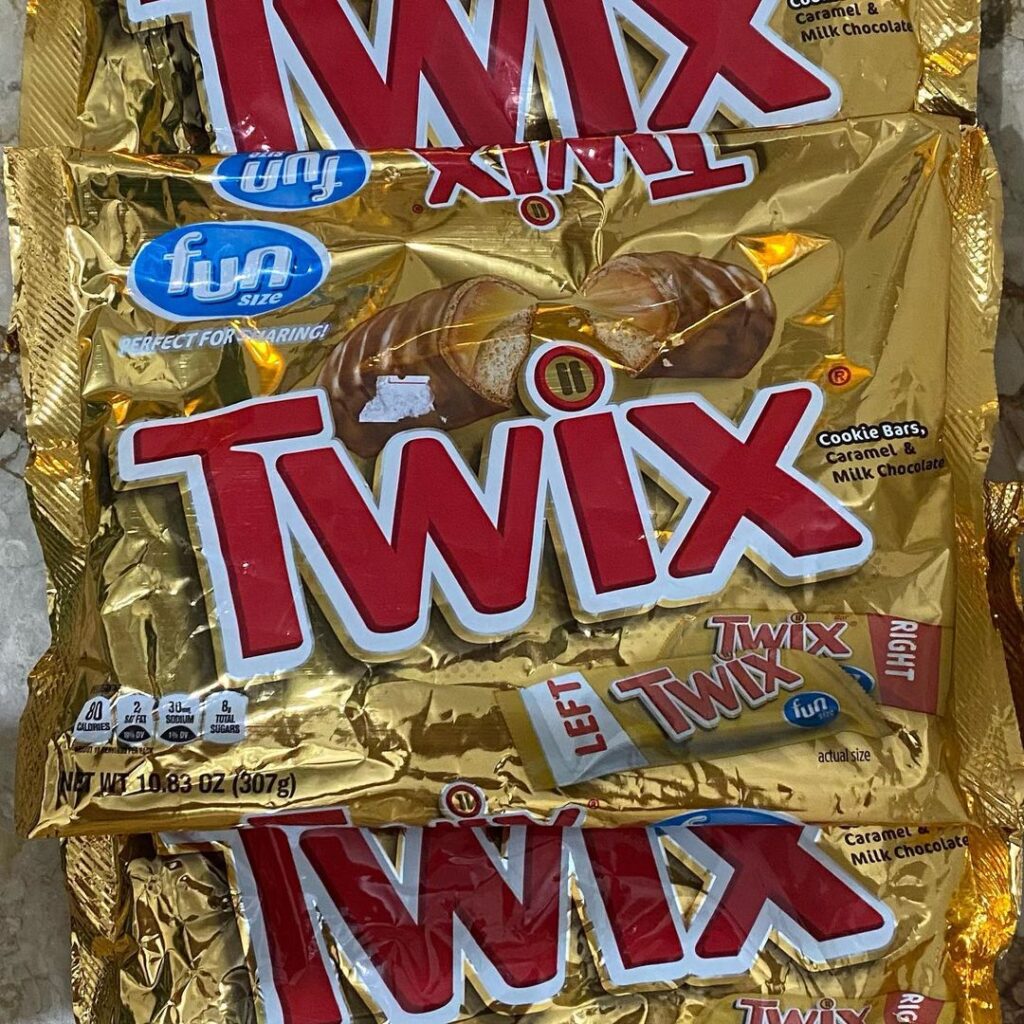
Twix was created by Mars, Inc. in 1968 in the United Kingdom. It was only in the late 1970s when it arrived in the United States. It is a caramel shortbread chocolate bar. There are usually two Twix bars in the package. Twix was called Raider in Europe for a long time until it was changed to match the international brand name.
There is no certain fact as to what the name “Twix” means. Unlike other popular candy bars like Snickers and Almond Joy, which come from an actual word, Twix does not itself mean anything. There’s a thought that Twix is actually a portmanteau for either “twin” and “stix” or “twin” and “mix”, but the first one makes more sense. What do you think is the origin of the name?
4. Sherbet Dip Dab
Sherbet Dip Dab is much like Fun Dip and Double Dip. Sherbet is a sparkly powder that tickles your tongue when you pour it into the mouth. Dip Dab was created in the 1970s and became as iconic as former fizzy candies like Pixy Stix.
Some people enjoy eating Sherbet powder by dipping lollipops or licorice in it. Others are in favor of licking it off their fingers. So Barrat & Co. created Sherbet Dip Dab. It was a strongly flavored sherbet lollipop that was sold in combination with sherbet powder. This iconic candy from the 1970s was especially popular among children, who were entertained and would go crazy about fizzy lollipops.
5. Marathon Bar
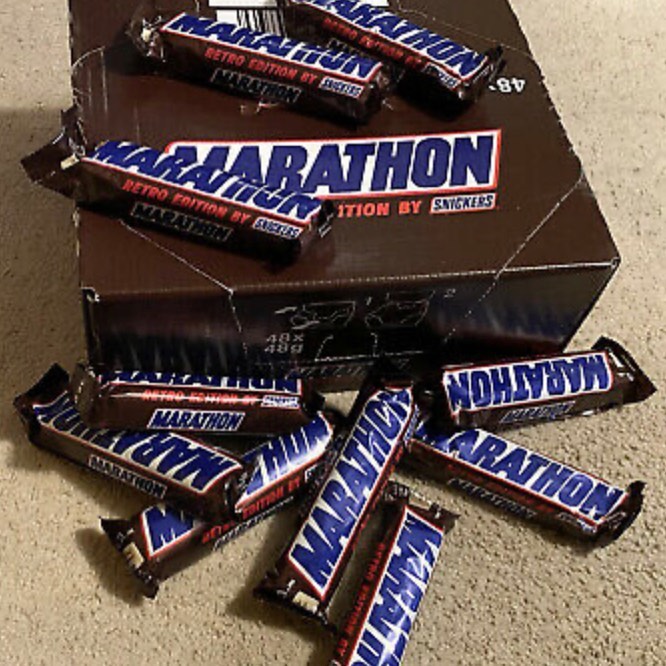
Have you ever wondered where your childhood favorite Marathon Bar disappeared? We can say that it is a long-lost candy but your childhood nostalgia remains. Marathon Bar was introduced by The Mars Company in 1973. It was a caramel bar coated in chocolate. Marathon Bar was eight inches long, so the manufacturers highlighted the size of the candy bar. There even was a ruler on the wrapper to show how big it truly was.
The advertisement for Marathon Bar called it “the candy bar you can’t eat quickly.” Unfortunately, this iconic candy was discontinued in 1981, but to delight the addicts of Marathon Bar, Cadbury Candy Company created a very similar Curly Curly Bar. Was it a replacement for Marathon Bar lovers? You tell us.
6. Laffy Taffy
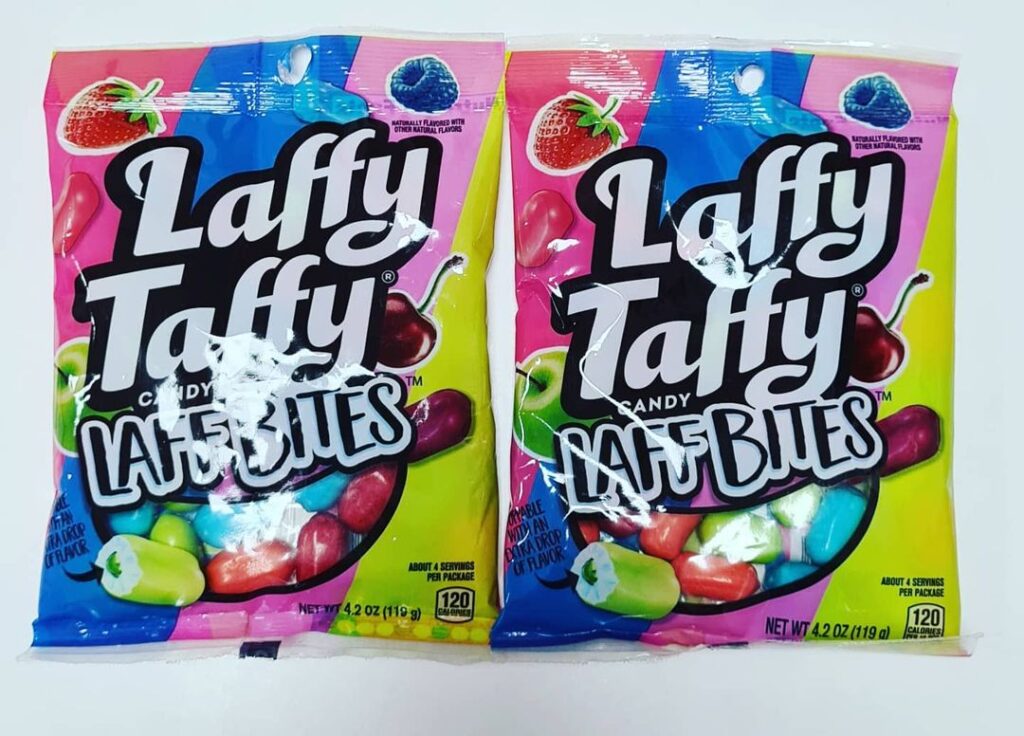
What is the first thing that comes to your mind when you think of retro taffies? After the release of Mamba taffies, another one was Laffy Taffy to enter the market. It was introduced in the 1970s by the Ferrara Candy Company. It is an individually wrapped taffy, with artificial fruit flavors.
The name Laffy Taffy refers to both, texture and embodiment of silliness because there are short, question and answer style jokes printed on every wrapper. Some of them include “What do you call a cow with no legs? – Ground Beef”, “What’s an owl’s favorite subject? – Owlgebra.” Did you save the wrappers of Laffy Taffy to share all the jokes with your friends the next day?
Laffy Taffy was originally advertised as having a “long-lasting” flavor. They used to be thicker before, but now the company makes them rather thinner.
7. Sir Grapefellow
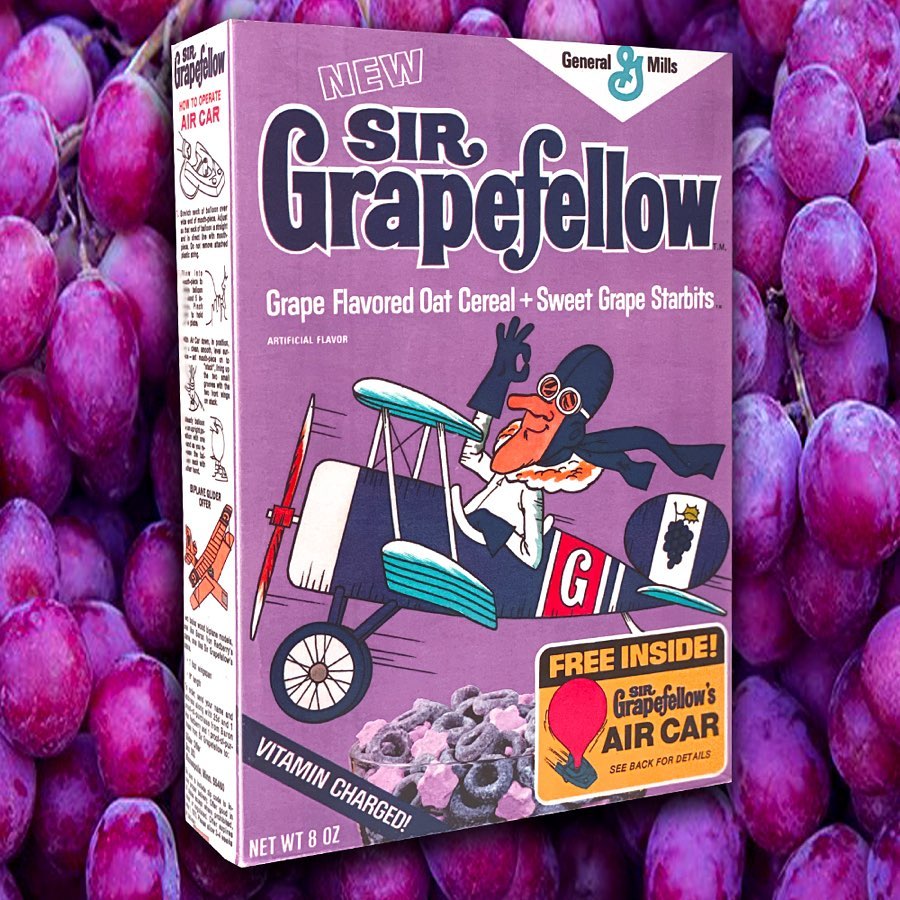
Sir Grapefellow was a cereal introduced by General Mills in 1972. It featured a British World War I era pilot of the same name. The cereal consisted of grape-flavored oats and sweet grape star bits. Star bits were star-shaped marshmallows similar to those found in Lucky Charms cereal.
As we mentioned, the mascot of the cereal, Sir Grapefellow, was a British pilot. On the box, it was shown as flying on a purple plain, with purple grapes painted on the tail. Concurrent to the introduction of this cereal, General Mills created a berry-flavored cereal, called Baron von Redberry Cereal. It featured a German pilot flying in a red plane, with berries painted on the tail.
Two kinds of cereal were advertised in tandem, showing the characters as good-natured enemies. Each was claiming they were representing the best cereal.
8. Fruity Yummy Mummy
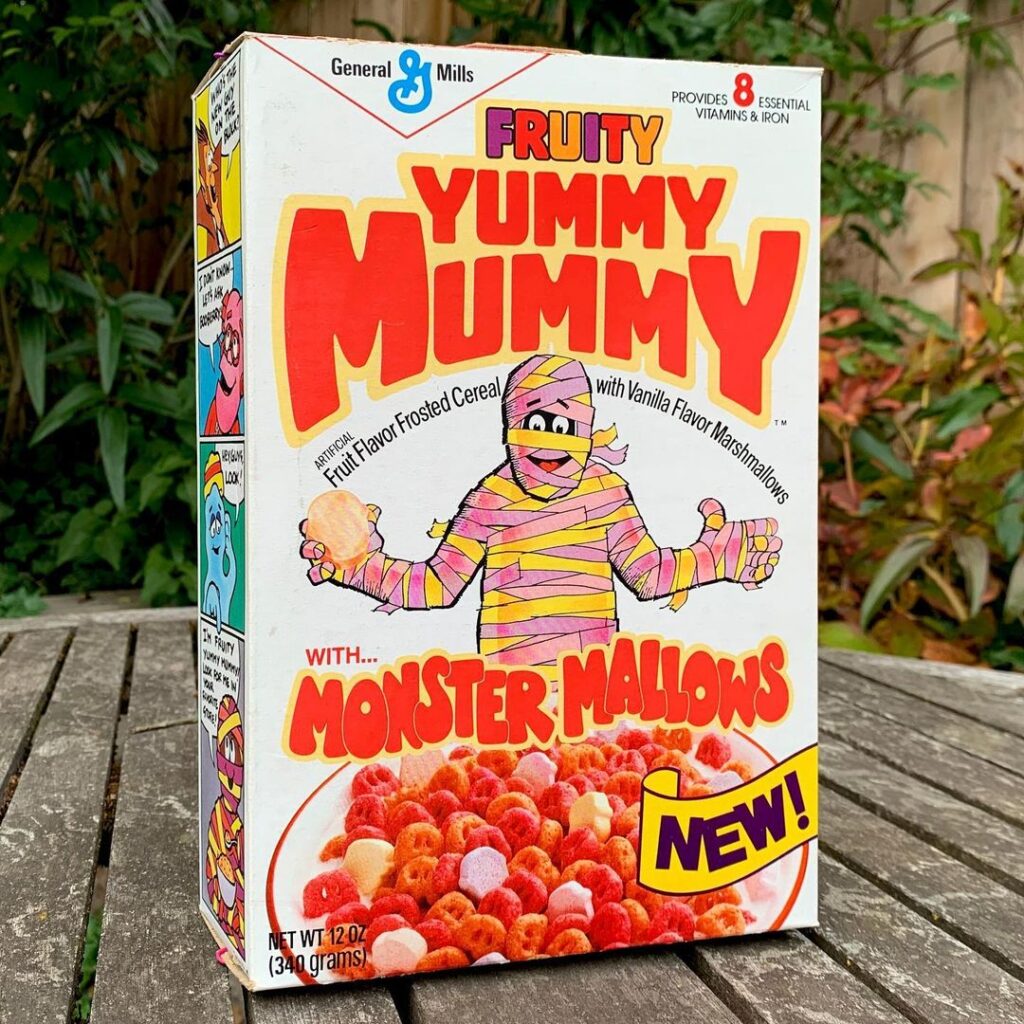
In the year of 1971, General Mills launched what was soon to be everyone’s favorite, the iconic Monster Cereals line. They were inspired by movie monsters, and each character featured a cartoon version of them. There were Count Chocula, Franken Berry, Boo Berry, Fruit Brute, and Fruity Yummy Mummy.
Monster-themed cereals quickly stole people’s hearts, especially children’s. They were fun to eat, and there’s no doubt they tasted great. Fruity Yummy Mummy was a replacement for Fruit Brute cereal, and the mascot for the brand, as the name tells you, was a cartoon mummy.
Fruity Yummy Mummy was discontinued in 1992 and only after 21 years was added back to the Monster Cereal brand.
9. Whistle Pops
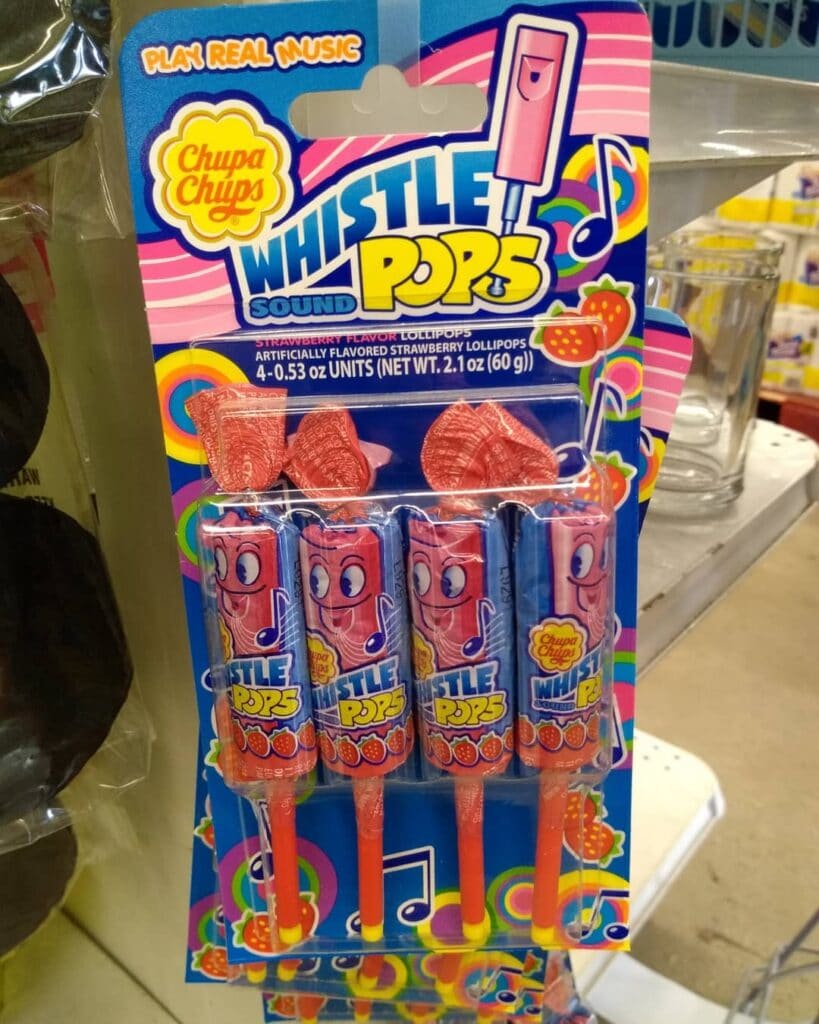
Were they candy or were they musical instruments? Whistle Pops, or Melody Pops, as they are called in some countries, were popular lollipop candy from the 1970s created by the Spangler Candy Company. They had holes in them, so when you blew into the hole, the candy would make a whistling sound. Did you have fun whistling while enjoying sucking Whistle Pops?
Just like Chupa Chups and Tootsie Pops, Whistle Pops was extremely popular among children. There were four flavors of original Whistle Pops: Blue Raspberry, Green Apple, Strawberry, and Watermelon.
There was a version of Whistle Pops with a slider that would change notes when whistling in the candy. It was a double benefit for children, they were getting candy as well as a toy. Unfortunately, this great 70s candy was discontinued but later reintroduced under the Chupa Chups brand, but with slightly different variations.
10. ZotZ Candy
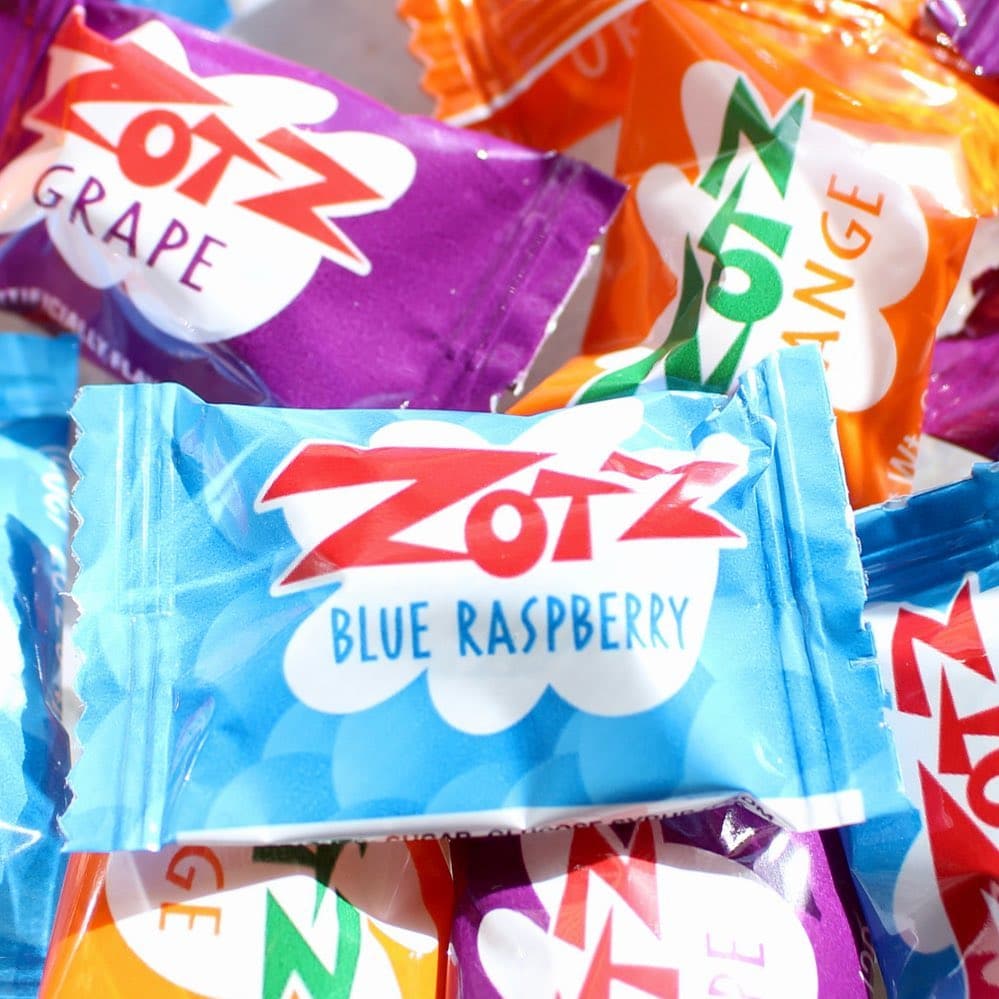
ZotZ was a truly unique candy with a fizzy sour center and a sweet hard candy coating. If you enjoy unusual flavors of candy, then you’ll be the one who always had ZotZ in their pockets. It was created in 1968 in Italy by G.B. Ambrosoli SPA and was brought to the United States by Andre Prost. If you’ve never tasted ZotZ but remember Shockers or Lemonheads from the 60s, you can guess what this sweet and sour candy tastes like.
Have you seen the movie ZotZ? You are right, the candy got its name after the movie. The creators of the candy targeted the audience, who were shocked by the movie and admired it. So they created a “shocking” candy themselves, with sweetness, sourness, and fizziness mixed together. Were you shocked when you first tasted ZotZ?
70s Candy Bottom Line
Were you a fan of the 5th Avenue bar? Or did you get pleasure from trying shocking flavors like sweet and sour Shockers or burning hot Red Hots? There is something for everyone, no matter which side of the candy aisle you are on.
As globalization was spreading, your breakfast probably included not only American cereals but also those that were produced in other countries. Or you had at least one foreign brand of candy from the 1970s in the lunch box.
Candy from the 1970s played an important role in people’s everyday lives. It was not perceived as a luxury anymore. It became a common activity to bring candy as a gift. What 70s candy made you smile when someone gave it to you?
Holidays became all about candy. Children wished for Zagnuts or Ring Pops in their trick-or-treat basket. They were waiting for Christmas editions of their favorite treats. Who would not go crazy about the variations and colors manufacturers had to offer during the holiday season?
Going to the movies without your favorite treats like M&Ms, Mike and Ike, or Twizzlers was unthinkable. The list can go on endlessly, as every person enjoyed unique sweets at the cinemas. What was the one thing you couldn’t imagine seeing a new movie without?
Please share your favorite breakfast snacks, holiday treats, or movie theatre candy from the 1970s with us.
Candy Era

Nato is a content writer and researcher with a background in psychology. She’s passionate about writing about the candy industry and exploring the cultural significance of sweets and treats. She believes that the stories behind our favorite snacks can reveal a great deal about our values.
Please leave a review or any memories of this snack in the comments below. Thank you!
Click here for a full A-Z list of Snacks and Candy
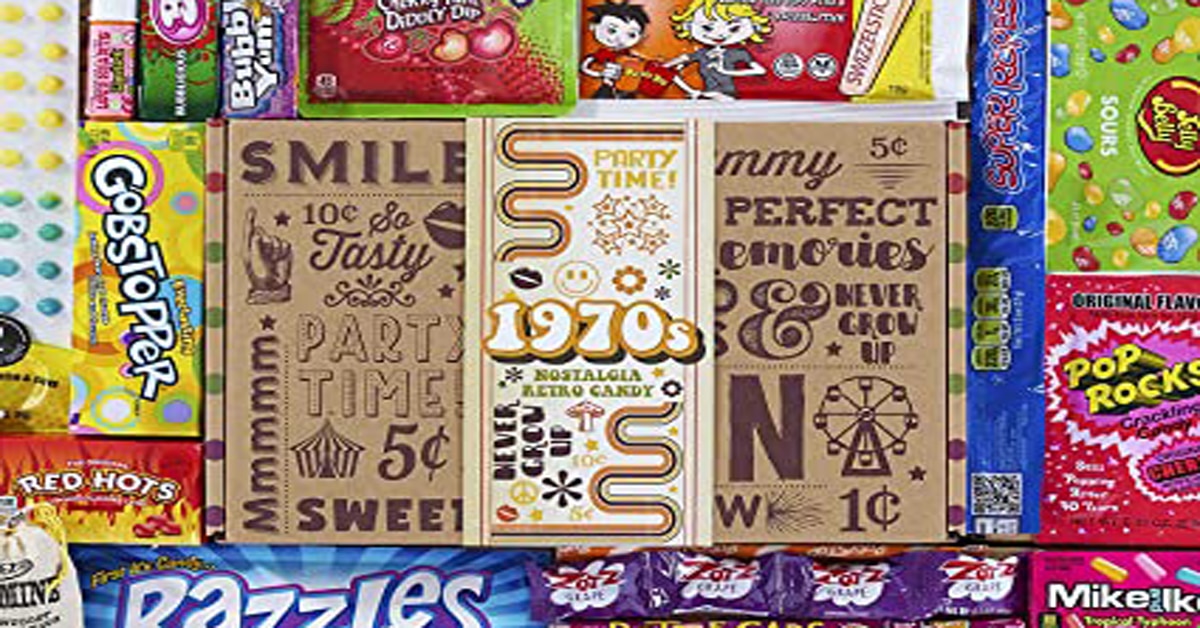
Yes I do remember them candy. They were really good. Most of them they don’t sell anymore. If you can find them any where please send me the information. I would love to get some of them again. I have grandchildren that would love to try them. I really miss the good old days. I used my money in buying the candy every week.